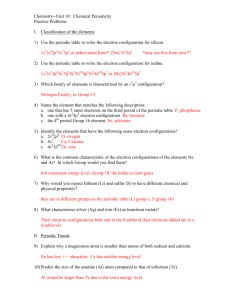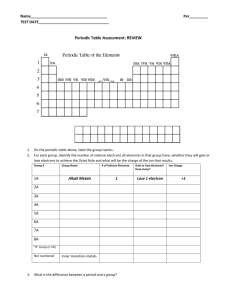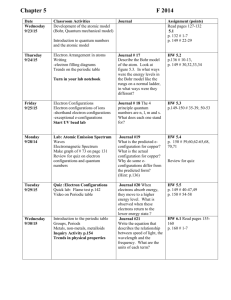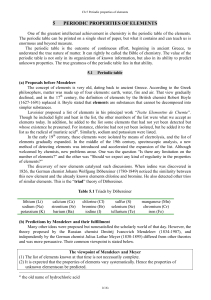REVIEW FOR 9 WEEKS EXAM Section 1: Matter, Lab safety, Density
advertisement
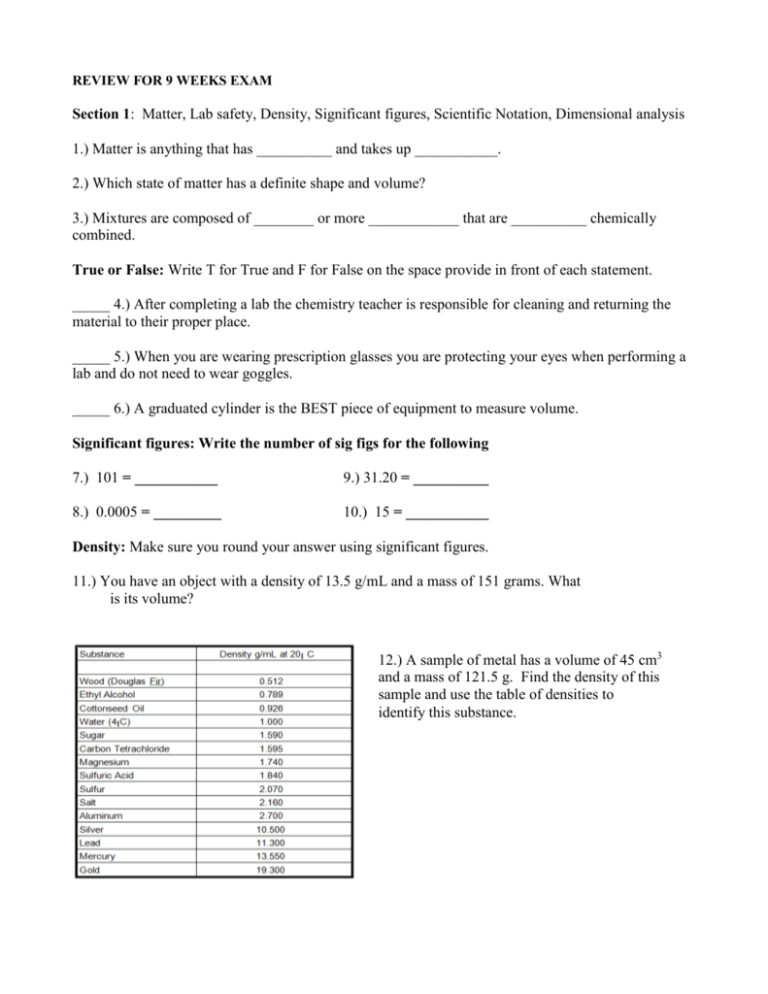
REVIEW FOR 9 WEEKS EXAM Section 1: Matter, Lab safety, Density, Significant figures, Scientific Notation, Dimensional analysis 1.) Matter is anything that has __________ and takes up ___________. 2.) Which state of matter has a definite shape and volume? 3.) Mixtures are composed of ________ or more ____________ that are __________ chemically combined. True or False: Write T for True and F for False on the space provide in front of each statement. _____ 4.) After completing a lab the chemistry teacher is responsible for cleaning and returning the material to their proper place. _____ 5.) When you are wearing prescription glasses you are protecting your eyes when performing a lab and do not need to wear goggles. _____ 6.) A graduated cylinder is the BEST piece of equipment to measure volume. Significant figures: Write the number of sig figs for the following 7.) 101 = ___________ 9.) 31.20 = __________ 8.) 0.0005 = _________ 10.) 15 = ___________ Density: Make sure you round your answer using significant figures. 11.) You have an object with a density of 13.5 g/mL and a mass of 151 grams. What is its volume? 12.) A sample of metal has a volume of 45 cm3 and a mass of 121.5 g. Find the density of this sample and use the table of densities to identify this substance. 13.) If the density of a substance is 1.25 g/mL and the volume is 45.0 mL, what is the mass of the substance? Physical vs. Chemical Changes: 14.) sugar dissolving in water ___________ 16.) iron rusting _____________ 15.) grinding coffee _____________ 17.) rotten egg ______________ 18.) Which substance cannot be broken down by a chemical change? (A) ammonia (B) mercury (C) propane (D) water 19. What are signs that let you know a chemical change has occurred? Heterogeneous vs. Homogeneous mixtures 20.) pizza _________________ 22.) blood ___________________ 21.) kool-aid __________________ 23.) vinegar _____________________ Section II Atomic Structure: 24.) The Lewis Electron Dot Structure is a representation of the _______________ electrons arranged around the atom. 25.) The gold foil experiment where sheets of gold were bombarded with alpha particles was carried out by ________________________________ and concluded that an atom contains _______________ _____________________________________________. 26.) What is the maximum number of electrons that each of the following sublevels (blocks) can hold: s-block = ____________ d-block = _______________ p- block = ____________ f- block = _______________ 27.) Provide “ground state” electron configuration for the following elements: (ground state simply means the most stable, but the e- configuration is done the same) a.) Iron (Fe) = _____________________________________________ b.) Arsenic (As) = ______________________________________________ 28.) Identify the following elements by using the “ground state” electron configuration given: a.) 1s22s22p63s23p6 4s23d5 = _________________________________ b.) 1s22s22p63s23p5 = _________________________________ 29.) How many electrons do each of the following elements have? (example: Be has 4 electrons, but when it becomes an ion Be 2+, then the 2+ means it loses 2 electrons and now instead of having 4 it has 2) a.) Li+1 = ____________ b.) Al+3 = _____________ 30.) Carbon - 14 a. What is the mass of this isotope? ______________ b. How many protons are in this isotope?_____________ c. How many neutrons are in this isotope?_____________ 31.) What is the number of electrons in a completely filled second shell of an atom? (A) 32 (B) 18 (C) 2 (D) 8 Section III: The Periodic Table 32.) According to the periodic law, properties of elements can be predicted by their position on the ______________________________. 33.) Which group of elements ionize by losing 2 electrons and have a +2 charge/ oxidation # _______________________________ 34.) True or False: When an ion has a positive charge it means it is gaining electrons. a.) True b.) False 35.) How many valence electrons are found in helium? _______________ 36.) Out the following elements which one does not have similar chemical properties: Lithium, Potassium, Cesium, and Sulfur 37.) According to the periodic table, which of group of elements will form an ion with a -2 charge? _________________________________ 38.) Which group of elements are good conductors of heat and electricity, generally shiny, and most are ductile and malleable?_______________________ 39.) Dimitri Mendeleev organized elements by increasing atomic _____________into columns with similar properties. 40.) The bonding characteristics of Carbon are most similar to the bonding characteristics ofa.) hydrogen c.) helium b.) silicon d.) sulfur 41.) Identify each of the following elements as a metal, metalloid, non-metal, and provide their oxidation number (charge) Element Metal, non-metal, metalloid Oxidation number (charge) Sodium Aluminum Bromine Neon Nitrogen 42.) Using the _______________________ Mendeleev was able to predict the properties of unknown elements. 43.) Which of the following characteristics applies to the element: Aluminum? a.) inert b.) gas c) good conductor of heat 44.) The element Barium would have similar chemical and physical properties as which of the following elements: strontium, sodium, or carbon _______________________ 45.) Which group of elements is considered to be the most reactive on the periodic table? ________________________________ 46.) What is the name of the following representative groups on the periodic table: 1A: _________________________ 2A:_________________________ 7A: _______________________ 8A:_________________________ 47.) What group of elements lose their valence electrons to form a +3 charged ion? 48) The horizontal rows on a periodic table are referred to as ___________________. 49.) Vertical columns on the periodic table are called groups or _______________. 50.) Where are elements with the largest atomic radius located on the Periodic Table? 51.) Where are elements with the highest electronegativity located on the Periodic Table? 52.) Where are elements with the highest ionization energy located on the Periodic Table? 53.) Which element has the lowest electronegativity value? (A) F (B) Cl (C) Fr (D) Cr 54.) Which statement compares the masses of two subatomic particles? (A) The mass of an electron is greater than the mass of a proton. (B) The mass of an electron is greater than the mass of a neutron. (C) The mass of a proton is greater than the mass of an electron. (D) The mass of a proton is greater than the mass of a neutron.
